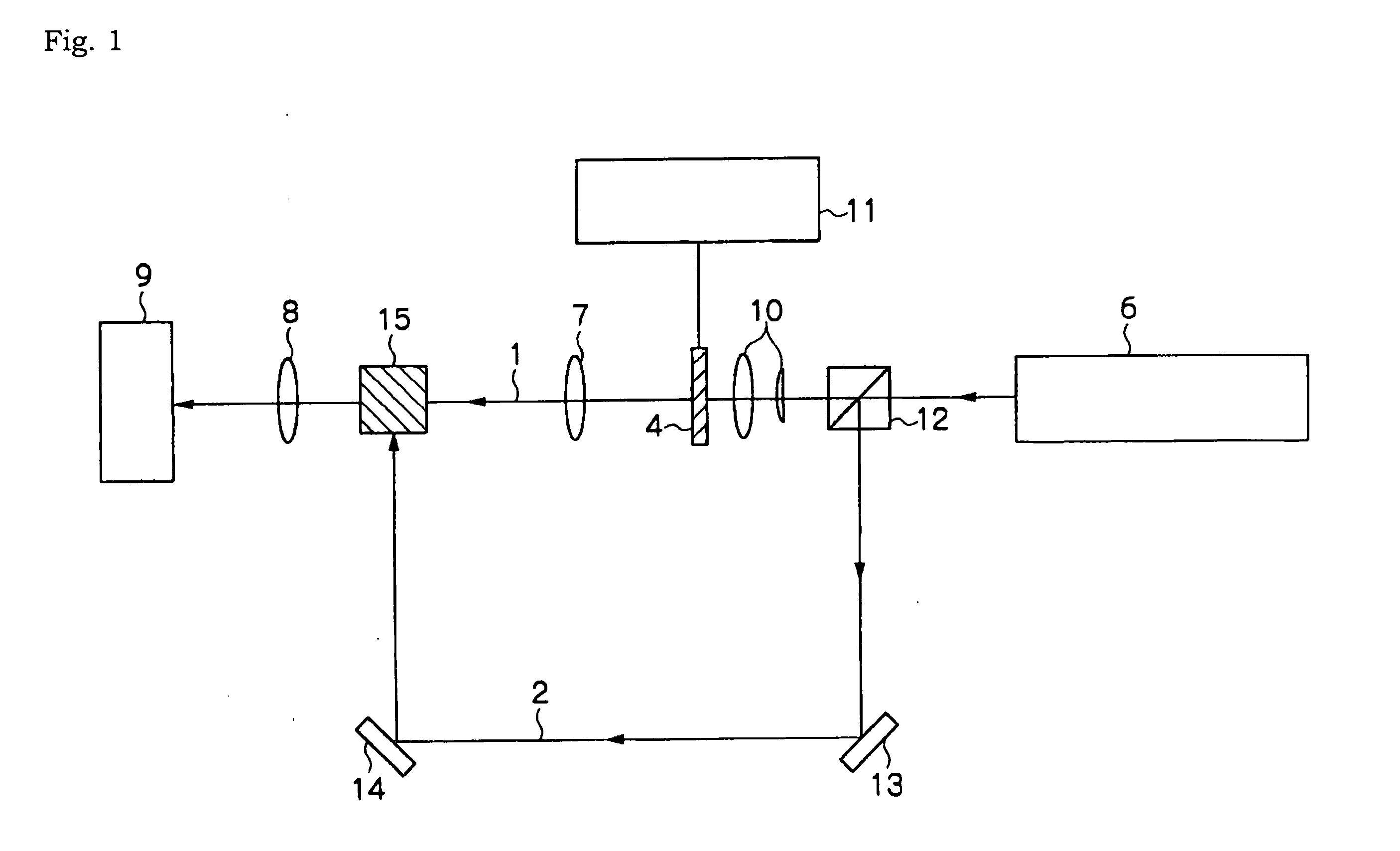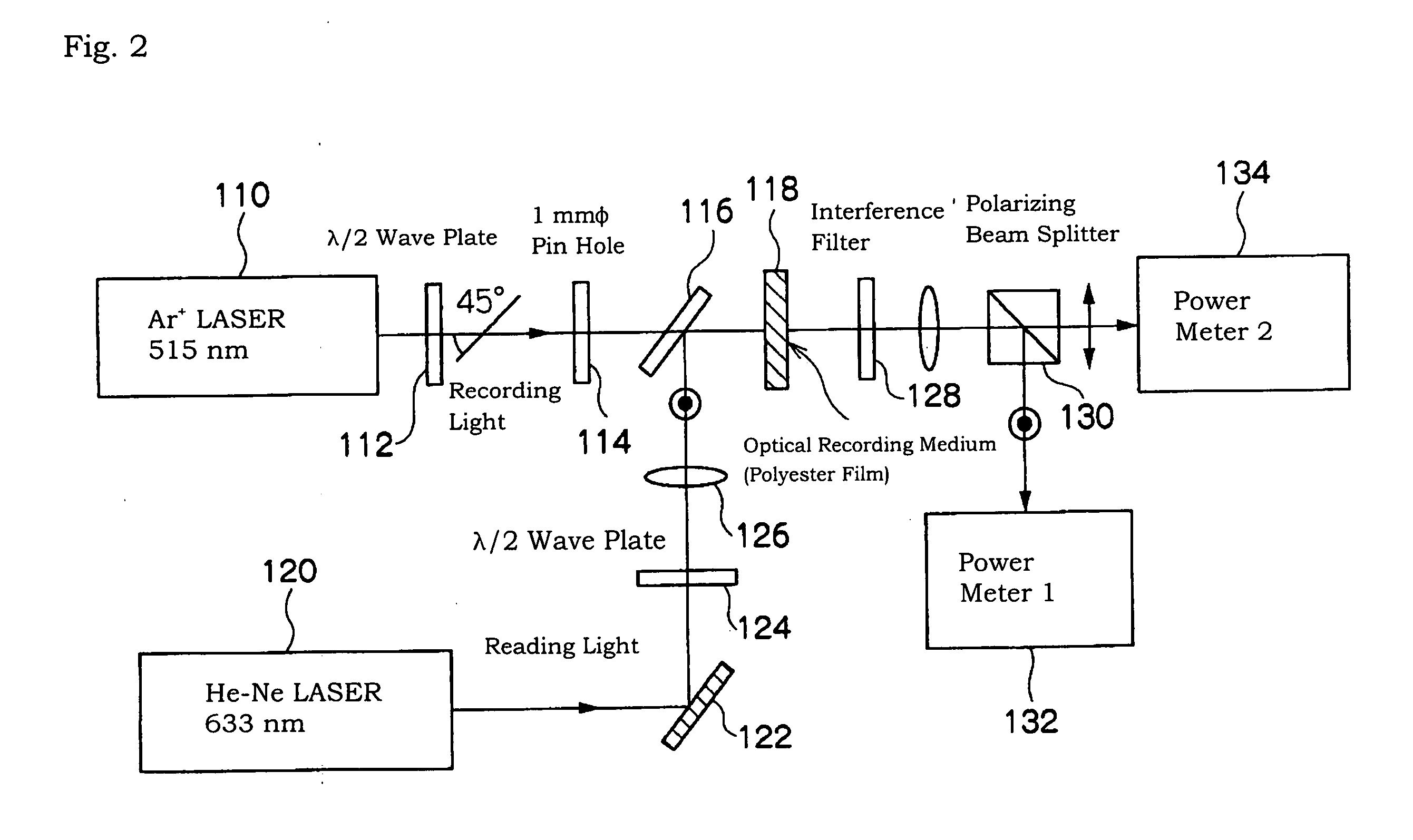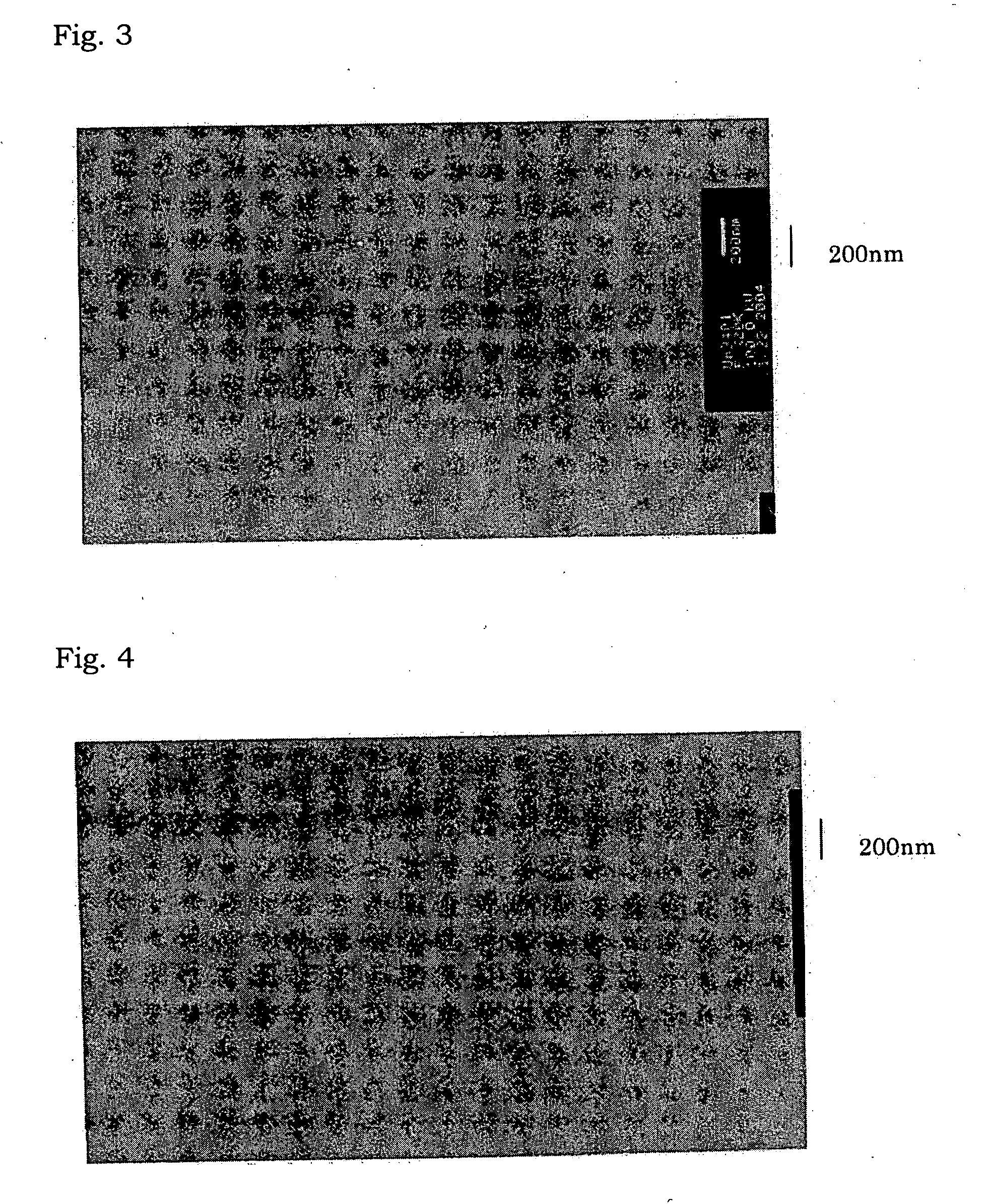Optical recording medium, method for producing the same, and optical recording and reproducing devices using the same
a recording medium and optical recording technology, applied in the direction of data recording, record carrier materials, instruments, etc., can solve the problems of insufficient performance of optical disk devices to meet the requirements, the density of recording materials has come close to physical limitations, and the capacity of data is limited by the diffraction limit of light, etc., to achieve large optically induced birefringence, poor recording holding properties, and thermal stability
- Summary
- Abstract
- Description
- Claims
- Application Information
AI Technical Summary
Benefits of technology
Problems solved by technology
Method used
Image
Examples
example 1
(Example 1)
-Recording Layer Materials-
[0190] When an optical recording medium according to example 1 is produced, a quasi-crystalline photoresponsive polymer that includes constitutional units represented by the formulae (1) to (4) with a constitutional ratio by mol of X:Y:R:S=0.9:0.1:0.3:0.7 is the only recording layer material. The physical properties of the quasi-crystalline photoresponsive polymer are: Tm=45° C.; Tg=31.9° C.; Mw / Mn=2.06; and Mn=18970.
-Production and Evaluation of Optical Recording Medium-
[0191] A flake-like quasi-crystalline photoresponsive polymer is placed on a cleansed glass substrate, and another glass substrate is placed on the polymer. By conducting hot pressing under reduced pressure, a sandwich-type glass cell medium is prepared with the quasi-crystalline photoresponsive polymer interposed between two glass substrates. The film thickness of the quasi-crystalline photoresponsive polymer layer is controlled at 250 μm during the hot pressing by disposi...
example 2
-Recording Layer Materials-
[0194] When an optical recording medium according to example 2 is produced, a quasi-crystalline photosensitive polymer including constitutional units represented by the constitutional formulae (1), (3) and (4) with the constitutive ratio by mol of X:R:S=1:0.3:0.7 is the only recording layer material. The physical properties of the polymer are: Tm=54° C.; Tg=35° C.; Mw / Mn=2.15; and Mn=20566.
Production and Evaluation of Optical Recording Medium
[0195] A flake-like quasi-crystalline photoresponsive polymer is placed on a cleansed glass substrate, and another glass substrate is placed on the polymer. By conducting hot pressing under reduced pressure, a sandwich-type glass cell medium is prepared with the quasi-crystalline photoresponsive polymer interposed between two glass substrates. The film thickness of the quasi-crystalline photoresponsive polymer layer is controlled at 250 μm during the hot pressing by disposing a spacer between the glass substrates....
PUM
| Property | Measurement | Unit |
|---|---|---|
| diameter | aaaaa | aaaaa |
| diameter | aaaaa | aaaaa |
| glass transition point Tg | aaaaa | aaaaa |
Abstract
Description
Claims
Application Information
 Login to View More
Login to View More - R&D
- Intellectual Property
- Life Sciences
- Materials
- Tech Scout
- Unparalleled Data Quality
- Higher Quality Content
- 60% Fewer Hallucinations
Browse by: Latest US Patents, China's latest patents, Technical Efficacy Thesaurus, Application Domain, Technology Topic, Popular Technical Reports.
© 2025 PatSnap. All rights reserved.Legal|Privacy policy|Modern Slavery Act Transparency Statement|Sitemap|About US| Contact US: help@patsnap.com



